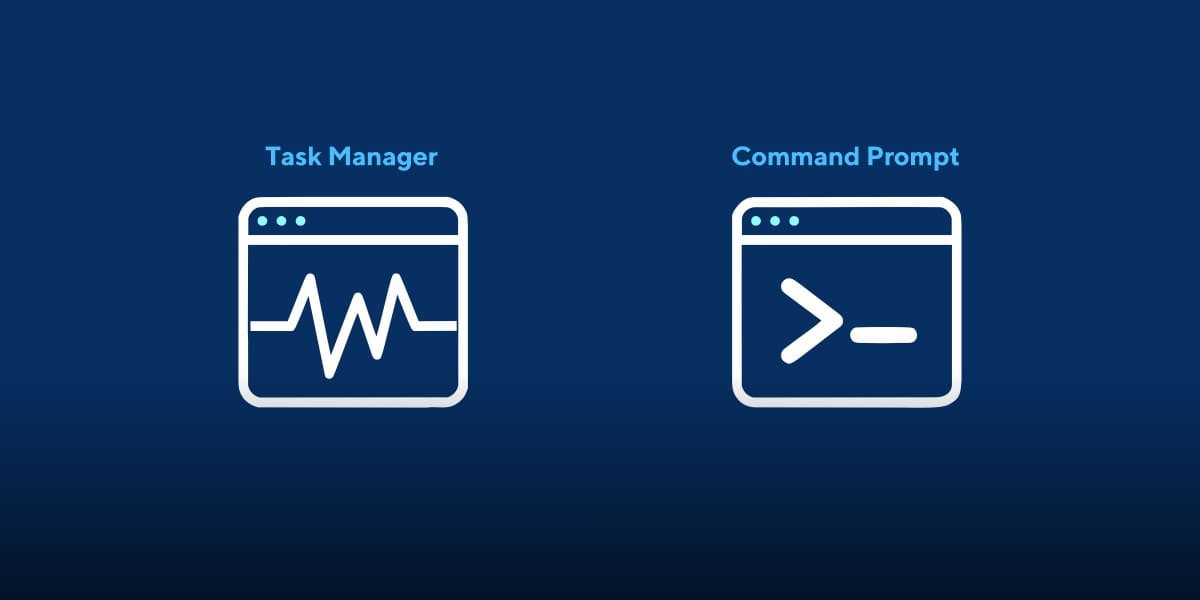Hardware virtualization, also known as hardware assisted virtualization, is the creation of virtual versions of operating systems and computers. The technology was made by AMD and Intel for their server platforms. Its purpose was to improve the processor’s performance and meet virtualization challenges such as translating memory addresses and instructions.
Many IT businesses have deployed servers that run only at a fraction of their total capacity. This is mostly because they dedicate their physical server to one particular application. This is not a very efficient mechanism as there is the availability of excess capacity that is going to waste. It also results in higher operating costs.
How does Hardware Virtualization Work?
Hardware virtualization has gained popularity in server platforms. The basic idea to enable hardware virtualization is to integrate numerous small physical servers into a single large physical server for the processor to be used effectively. The Operating System that runs on the physical server is converted into an OS that runs inside the virtual machine.

Hence, hardware virtualization means embedding a virtual machine software into a server’s hardware component. This software is given different names, with virtual machine monitor and hypervisor as the most common ones. Hypervisor controls the memory, processor and other components and allows different OS to run on the machine without needing a source code.
Advantages of Hardware Virtualization
It has many advantages to it. The main advantage is that it is much easier to control a virtual machine than a physical server. Operating systems running on the machine appear to have their own memory and processor. Hardware virtualization can increase the scalability of your business while also reducing expenses at the same time.
It can reduce downtime costs that are otherwise incurred in terms of money losses and recovery time in times of disaster affecting a physical server. A virtual machine can be easily cloned, thus making the environment more resilient. It also increases your team’s productivity by spending lesser time on physical hardware monitoring and maintenance.

Types of Hardware Virtualization
Hardware assisted virtualization has three kinds. These include:
- Full Virtualization: The hardware architecture is fully simulated. No modification is required by guest software for running applications
- Para-Virtualization: The hardware is not simulated, rather the guest software runs the isolated system
- Emulation Virtualization: In emulation virtualization, the virtual machine is independent. It simulates the hardware and there is no modification required by the guest operating system.
Enabling Hardware Virtualization
Coming to the main point of the article, let’s look at how you can enable hardware virtualization on your computer system’s BIOS. Every PC manufacturer requires different steps for entering the BIOS and making this change. The following are the steps that you need to take when enabling hardware assisted virtualization.

1. Check if your system supports hardware virtualization
This can be done in two ways, either through the task manager or through the command prompt.
By Task Manager
Open your task manager by using Ctrl+Shift+Esc keys. If your processor supports hardware virtualization, you will see virtualization as Enabled along with the other details, or otherwise disabled. If it does not support virtualization, you will not see Hyper-V or virtualization mentioned in the task manager.
Open your command prompt by first using Windows Key + R to open the run box. Type cmd in it and hit Enter. In your command prompt, type the command “systeminfo” and press Enter. This command displays all required details for your system, including support for hardware virtualization.
If your processor supports Hardware Virtualization technology, you will be able to see a section of Hyper-V requirements along with the status. If virtualization is turned off, you will see “No” in front of the option “Virtualization Enabled in Firmware”. This means that your system does not support hardware virtualization.

2. Reboot your Computer and Press the BIOS Key
If your system supports hardware virtualization, it’s time for you to reboot it and open its BIOS. The key for BIOS can vary according to the manufacturer of the BIOS. Most often, it is one of these keys i.e. Esc, Del, F1, F2 or F4.
When your screen goes black while rebooting, tap the BIOS key by quickly tapping it at least twice every second. This is important so that you don’t miss the BIOS while rebooting. If the key you used did not work, try rebooting your computer and do the same process with another key.
3. Locate the section for CPU configuration
Once you have entered the BIOS, you need to find the section for configuring your CPU. Depending upon your system, you will need to look for a menu called CPU configuration, processor, Northbridge or Chipset. You may arrive at this menu by clicking on a like such as “Advanced” or “Advanced Mode”.
4. Find the Settings for Virtualization
After finding the CPU configuration section, you need to find the menu or option where it allows you to enable hardware virtualization. Hardware virtualization is enabled in the acceleration section. Depending upon your PC, look for any of these or similar names such as Hyber-V, Vanderpool, SVM, AMD-V, Intel Virtualization Technology or VT-X.

5. Select the Option for Enabling Virtualization
When you reach the hardware virtualization enabling menu, it might ask you to choose the enabling option from a checklist or a drop-down menu. In either case, select the “Enabled” option. If you see the options of AMD IOMMU or Intel VT-d, enable them as well.
6. Save the Changes You Have Made
After selecting the enabling virtualization option, look for the option that allows you to save these changes. Before saving it, you may have to first exit the menu and then click the save changes option. Now you have successfully enabled hardware virtualization on your computer.
7. Exit Your BIOS and Reboot Your Computer
Once you have saved the settings of virtualization enablement, you have to exit the BIOS. The computer will now get restarted but with hardware virtualization enabled in it.
VirtualMetric’s Agentless Virtualization Monitoring
VirtualMetric offers enhanced virtualization monitoring software to ease the complexity of your virtualized environment. To get to know more about how our product works, click here by getting a free trial.


Leave a Reply